Chapter 3 — Gun Safety Rules
Back to Chapter 2: Types of Guns & Firearms
An essential part of your shooting range experience is learning gun safety rules. If you’re not yet familiar with these rules, don’t worry! Your instructor will go over these in-depth and make sure you understand everything for a safe and exciting experience. We’ll cover these safety rules, as well as the fundamentals of shooting below:
Fundamentals of Shooting
The four fundamentals of shooting or marksmanship are the elements that soldiers are taught to use when entering the fire line. Those are:
- Steady Position
- Aiming
- Breath Control
- Trigger Squeeze
Think of it as a checklist. When soldiers focus on these four fundamentals, they are more prepared and accurate with their shooting.
Firearm Safety Rules
When you’re shooting a gun at a shooting range, you must follow the five basic firearm safety rules at all times. They are put in place for your safety and the safety of others at the gun range, so they are not optional rules or loose guidelines. Failure to follow these safety rules will result in your shooting session ending immediately.
- Always point your firearm in a safe direction.
- Treat your firearm as if it is loaded (even if you believe it’s not).
- Keep your trigger finger off the trigger until the moment you’re ready to fire.
- Be certain of your target, and know what’s in your line of fire and beyond the target before firing.
- Always wear the appropriate eye and ear protective gear when shooting or maintaining your gun.

How to Choose the Best Gun Safe for Your Home
How to Choose the Best Gun Safe for Your Home Responsible gun owners will have purchased a gun safe long before their first firearm ever made its way home. An essential facet of gun safety is the safe storage of our firearms, but there is more to purchasing a gun safe than simply finding the…
Read More >
August 22, 2015
All shooting ranges take great care to provide a safe and controlled environment for patrons by strictly enforcing these rules. Following these basic firearm safety rules will ensure that you and the other shooters will have a fun, thrilling, and gratifying experience at the gun range.
How to Talk to Your Kids About Gun Safety
If you own a gun or take up shooting as a hobby as a parent, it’s important to know and understand how to explain guns to a child. Gun safety in the home is just as important as it would be at a shooting range or any other location. The National Rifle Association (NRA) has put together four rules you can share with your kids about gun safety.
- Stop – If you see a gun, do not go near it.
- Don’t Touch – Under no circumstances should you touch, hold, or pick up a gun.
- Leave the Area – Leaving the area minimizes the chances of injury if another person decides to handle the gun.
- Tell an Adult – Find a trusted adult figure and tell them what you saw.
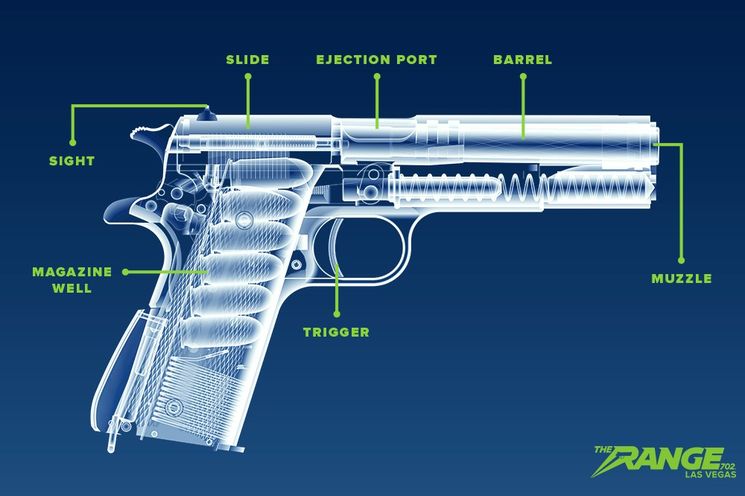
Chapter 1: Introduction to Firearms
If you are new to shooting guns, Chapter 1 of the Ultimate Shooting Range Guide gives a breakdown of the parts of a typical handgun, and a brief history of guns. Some topics you will learn:
- How Guns Work
- Parts of a Gun and Their Functions
- Differences Between Firearms and Handguns

Chapter 2: Types of Firearms
There are a lot of types of guns on the market, and you can shoot a selection of them at The Range 702 in Las Vegas. Chapter 2 of the Ultimate Shooting Range Guide is a breakdown the most popular types of guns:
- Rifles
- Shotguns
- Handguns
- Revolvers
- Pistols
- Machine Guns
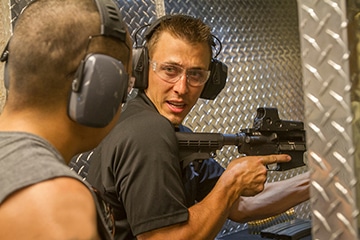
Chapter 3: Gun Safety Rules
The essential part of your shooting range experience is learning gun safety rules. If you’re not yet familiar with these rules your range safety officer or instructor will go over these in-depth. Chapter 3 covers everything for a safe and exciting experience, including:
- Fundamentals of Shooting
- Firearm Safety Rules
- How to Talk to Your Kids About Gun Safety
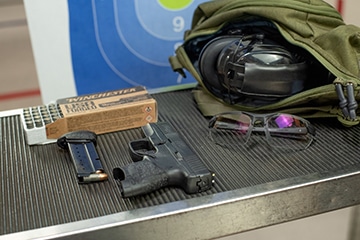
Chapter 4: Shooting Range Equipment
In Chapter 4 we cover the various types of gear and equipment you might see and bring to a indoor shooting range. Some of the items covered include:
- Additional magazines
- Hearing protection
- Protective eyewear
- Gun cleaning kit
- Targets
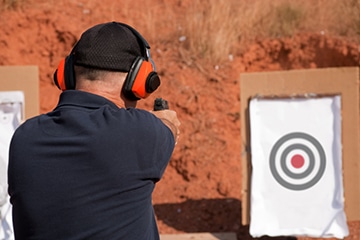
Chapter 5: Outdoor Shooting
Chapter 5 of the Ultimate Shooting Range Guide covers the benefits of shooting at an outdoor range plus how to build your own outdoor range. Topics covered include:
- What is an Outdoor Shooting Range?
- How to Build an Outdoor Shooting Range
- Where Is an Outdoor Shooting Range Near Me?
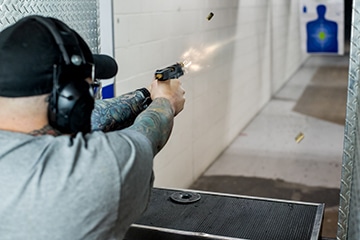
Chapter 6: Indoor Shooting
Many shooters prefer to shoot at an indoor gun range because they are protected from the elements and it’s great for target practice. In Chapter 6, you will learn:
- How Do Indoor Shooting Ranges Work?
- Are Indoor Shooting Ranges Safe?
- What Are Exotic Firearms at the Range?
- What Are Safety Requirements at Indoor Shooting Ranges?
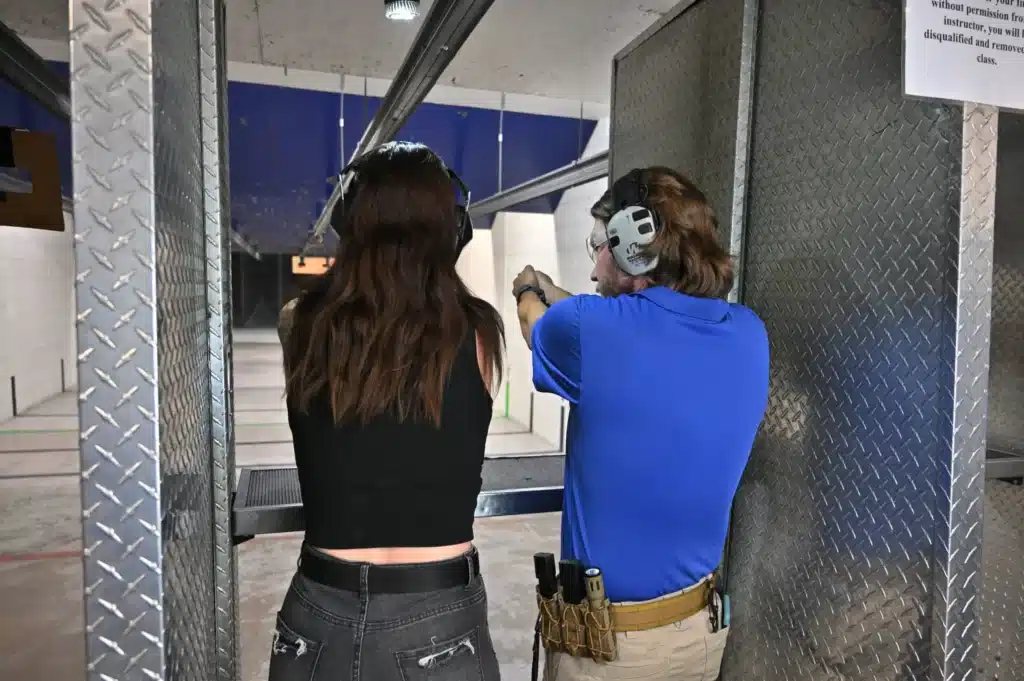
Chapter 7: CCW Classes
Chapter 7 of the Ultimate Shooting Range Guide covers the all the need-to-know for getting your concealed carry permit (CCW), including what to bring, and great firearms to consider purchasing for concealed carry.
- What is a CCW Class?
- Can You Take a CCW Class Before 21?
- How Long is a CCW Class?
- What To Bring to a CCW Class
- How to Get CCW Permit
